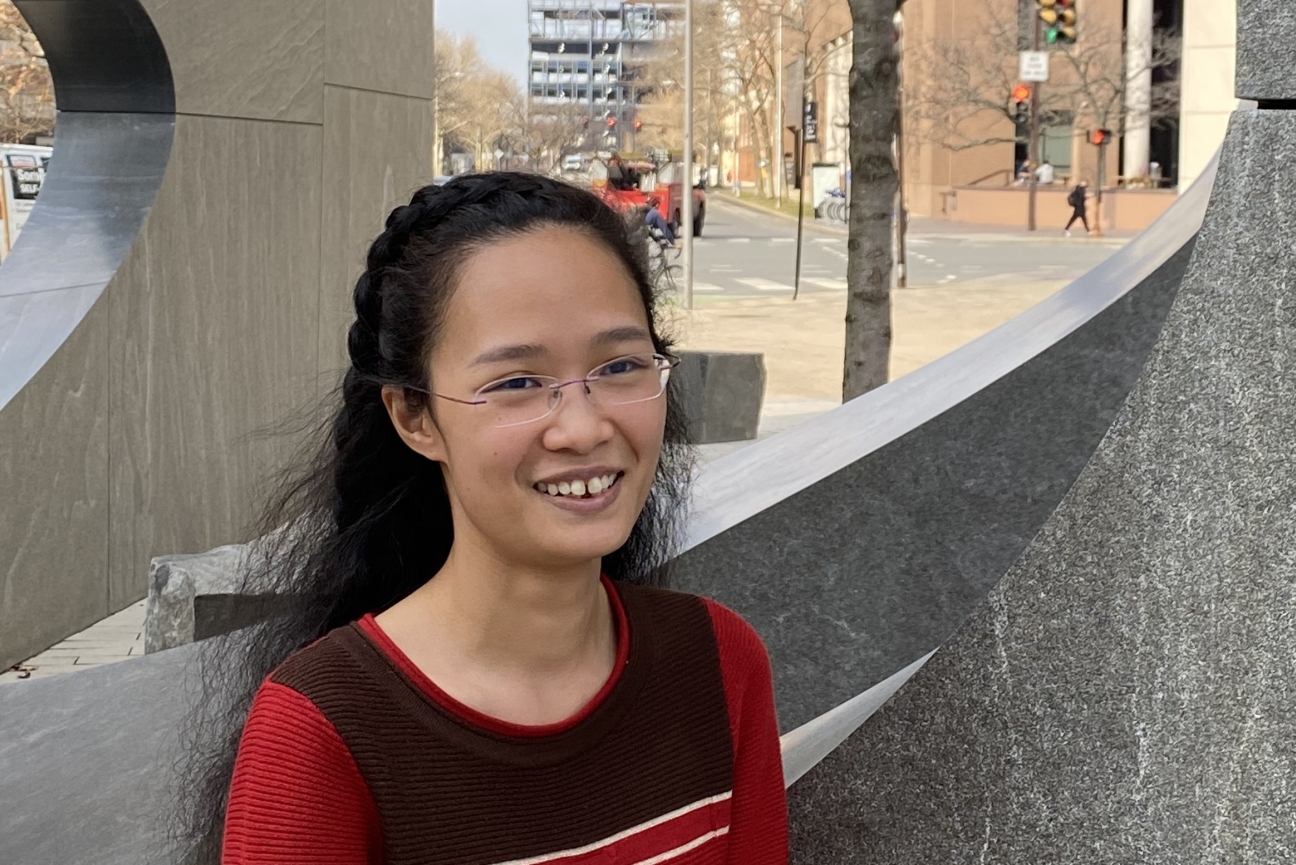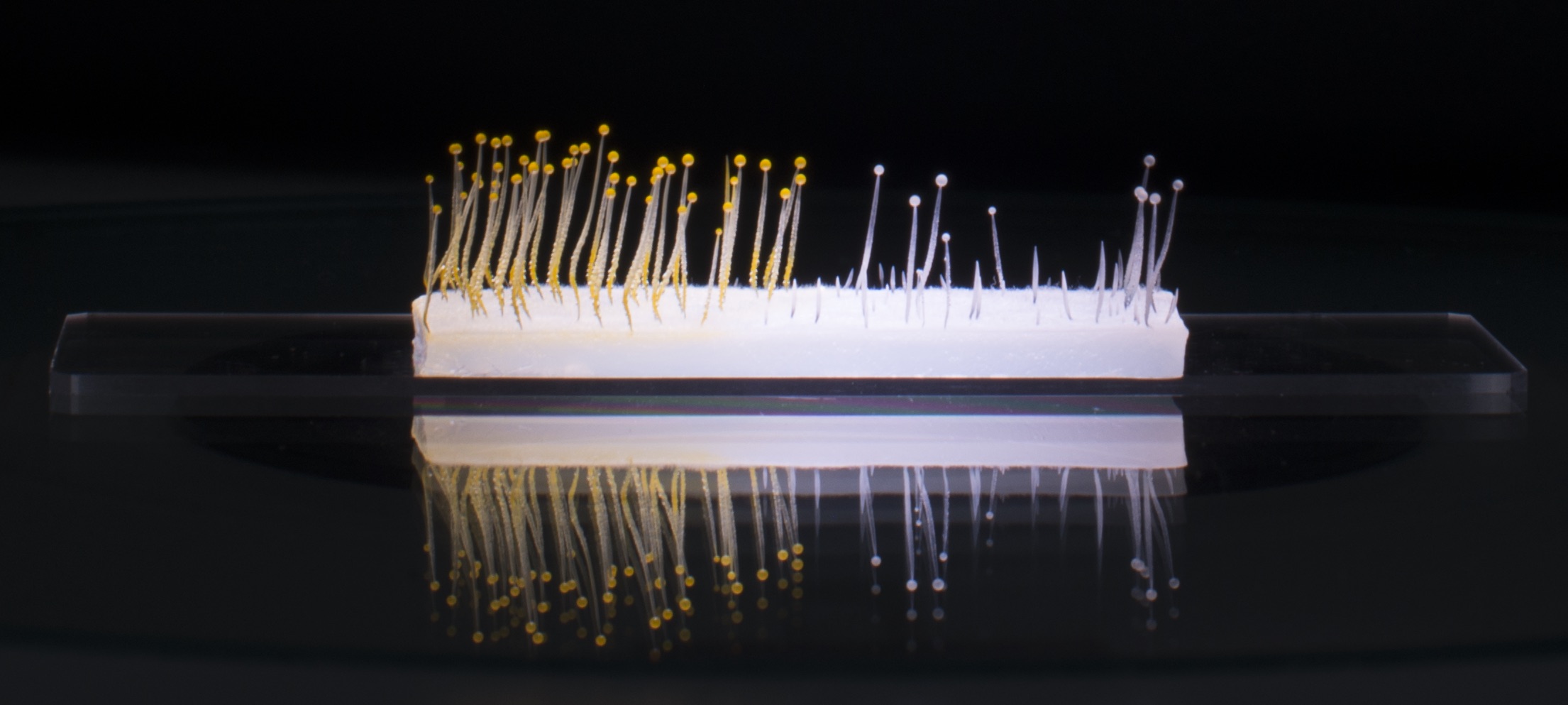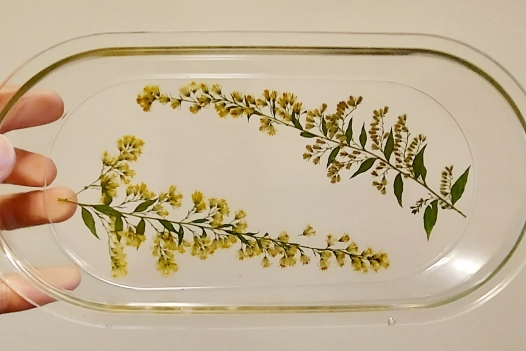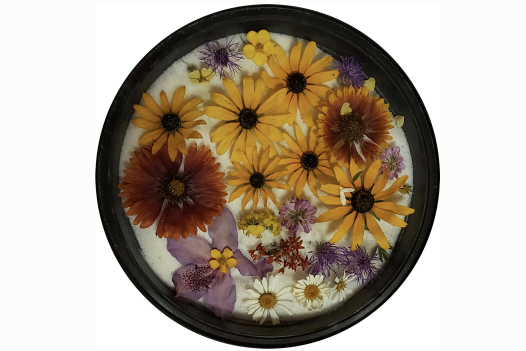
Anh Nguyen
Courtesy of Anh Nguyen
Meet a Whitehead Postdoc: Anh Nguyen
Anh Nguyen is a postdoc in Whitehead Institute Member Ankur Jain’s lab studying molecules in soil-dwelling amoebae that, in humans, can contribute to neurodegenerative diseases. We sat down with Nguyen to learn more about her and her experiences in and out of the lab.
What are you investigating?
The Jain lab is generally interested in repeat expansion diseases, such as ALS and Huntington’s disease. These are caused by expansion of CAG nucleotide repeats—basically a long string of CAGs in a row. These CAG repeats code for an amino acid called glutamine, so they're also called polyglutamine expansion disorders. I study an organism called Dictyostelium discoideum, which is a very small, single-celled organism living in the soil that has a lot of polyglutamine tracts. The reason why it's interesting is because polyglutamine is usually toxic in humans, and long strings of polyglutamine repeats cause diseases in humans, but then this organism has a lot of long polyglutamine tracts and is fine. The questions I'm pursuing are, first of all, why are the polyglutamine tracts not toxic in this organism? And second, why does this organism need so many of these polyglutamine tracts?
What is your scientific background and how did you end up working on this topic?
When I was in grad school in Singapore, I was studying a lot of non-traditional organisms: marine slugs, algae, and a lot of fungal species. One of the projects I was interested in was related to repetitive proteins, and the Jain lab is interested in repetitive RNA sequences, so that link made me want to join the Jain lab. Then, given my affinity for non-traditional model systems, that's why I decided to work with Dictyostelium.
You’ve worked with a lot of fungal species. What is your favorite fungus?
There is one called Phycomyces that I spent a lot of time working on during grad school. It’s beautiful to look at. It develops a spore bearing structure that can be more than ten centimeters long but only a tenth of a millimeter wide, so if you think of it like a tree, that’s a very tall tree. That whole structure is a single cell, so the amount of pressure that the cell wall can withstand is just enormous. It also has its own cytoplasmic clotting system that is very analogous to blood clotting in humans and vertebrates in general. It also has this cool gravity sensing structure mainly made up of a single protein, which was horizontally acquired from bacteria.

What did you want to be as a little kid?
I wanted to be a math teacher because I was born into a family of teachers. My mom was a teacher, a lot of my uncles and aunts were teachers, so it was just a natural thing. Getting into science was, for me, very coincidental. My last year of high school, in Singapore, there was some reason why I couldn’t go home to Vietnam for December break. So I stayed in Singapore and joined a research lab. The first thing I looked at when I joined that lab was this very beautiful filamentous fungus called Neurospora. I'm a very visual person, so I was immediately attracted to working with that organism, and I found the work really interesting. I stayed with that lab for the next ten years, through undergrad and my PhD. But I wasn’t intending to be a scientist at all; it all started with that incident where I couldn’t go home.
Have you remained interested in teaching or mentoring?
Yes, I'm working with an undergrad now. When she started, I think it was intended to be a one semester thing, but then we encountered this interesting protein and we decided to pursue it further. The project is still ongoing, and we’ve been discussing plans for the summer. I find working with students to be a highlight of my research life. I think they are a source of inspiration. After working on the same problem for a long time, it can become routine. Students come in and look at things with a very fresh perspective, they have so many questions, and their excitement for the things that we have become used to can be infectious. Working with undergrads makes me more excited about the work I’m doing.
What’s the biggest disaster that you’ve ever had in the lab?
The thing that I’ll probably remember forever was not a disaster exactly, but a hard lesson. In my first year of grad school, I was fixated on a hypothesis and I was sure it was true. I kept delaying doing this control experiment because I thought there was no way my hypothesis was wrong, so it wasn’t necessary to check. That was a bad idea, but sometimes you are blinded by your own confirmation bias. In the end, when I was preparing to present my results to my committee, I finally did the control, and then it turned out my hypothesis was wrong. I wasted six months, and I was devastated. After that incident, I've always been very careful to include every single control I can think of, because that was a really costly mistake.
What are your hobbies outside of research?
My hobbies change all the time. One thing about coming to Boston, because previously I was from Singapore where there are no seasonal changes, is that I love the seasons here. I take long walks along the Charles River, and I like to see how the scenery changes as the season changes. I think it’s really beautiful. Another thing with the seasons is that the flowers here are very different from the kinds we have in Singapore and what you see changes over the year. So since I came to Boston, I started collecting flowers. I try to preserve them in different ways, from very simple things like pressing or leaving them to dry to I have gotten silica gel, I’ve preserved them in resin and then made resin plates and keychains to give to my friends. My favorite flower is Kwanzan Cherry.

Resin plate made by Anh Nguyen
Courtesy of Anh Nguyen

Resin plate made by Anh Nguyen
Courtesy of Anh Nguyen
Other than flowers, do you collect anything?
I think I have a thing for weird collections. My nerdiest collection started in high school. I used to collect pipette tips, because I worked in a bunch of different labs and when you are a high school student and don’t know anything about research, everything seems cool. I had a collection of pipette tips with the names and the manufacturers all in different sizes and different colors.
What’s your favorite meal to cook or order?
Tomato soup is my favorite meal and my comfort food. When I am stressed or tired, I make tomato soup. I like to make it creamy and very concentrated. It’s simple, which is good because I’m not a good cook, and it reminds me of home because my mom makes it a lot.
Where do you see yourself in ten years?
Honestly, I never have an answer to this question. I came to science coincidentally, and my strategy is to take an opportunity and try my best. I work hard, I do what I can, and I feel like for me that has been working out really well. In general, I want to continue working in research, because I like science and I find it really exciting. It's the total opposite of the definition of a boring job. I don’t know specifically what I’m going to do in the next ten years, but I know it’s going to be science-related.
Topics
Contact
Communications and Public Affairs
Phone: 617-452-4630
Email: newsroom@wi.mit.edu


